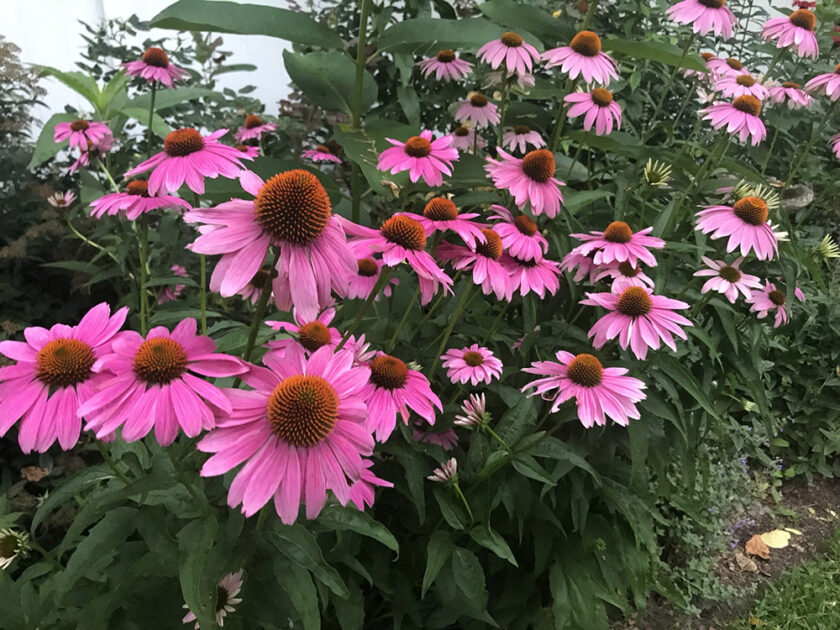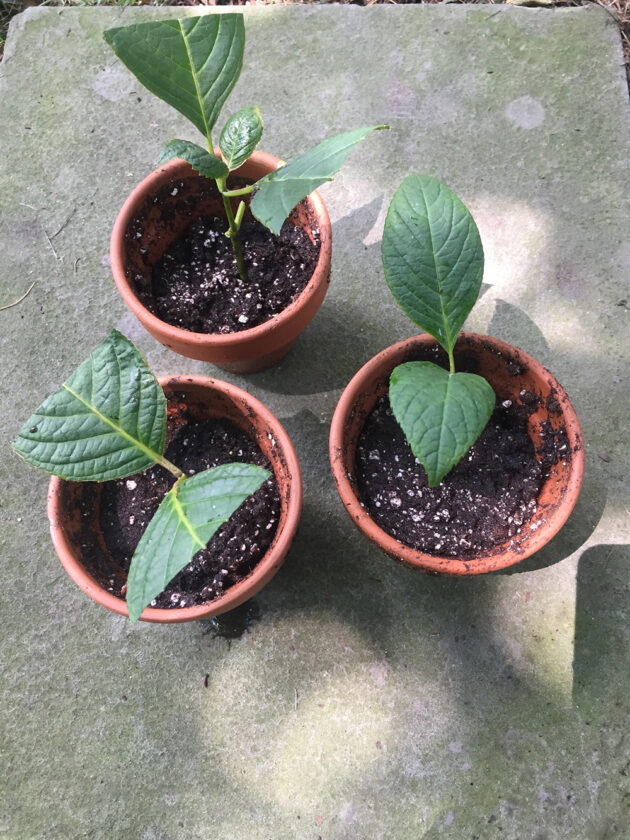Let It Grow
By Tammy Thornton
When the wallet feels a little thinner and lighter, one must be more prudent with their purchasing choices. Though I would strongly debate anyone that considers it frivolous to buy plants, at some point I would agree that a little restraint is necessary. So what is a plantaholic to do? Go shopping, of course—in your own garden!
Look around your garden from the perspective of an eager customer. Keep a keen eye for plants that are lost in the crowd among their peers but could shine if moved to a bare spot in the garden. Have you ever been at the grocery store and reached deep into the dark of a shelf for the “last one” of a particular product? Perhaps it was hiding behind something else. In the same way, If you’ve been growing your garden for any length of time or inherited a seasoned garden, you’ll find that some of the bushes and large plants have dwarfed others. Little forgotten plants may be languishing in the shadows of big bullies of the garden. Recently, I’ve been reworking a section of my yard that needed some filler plants. But I really didn’t want to spend any money on this project. After “shopping” in my garden, I found variegated liriope hiding under the hydrangeas and baby hostas stifled by bigger plants. Moving them to this new location has rescued them from their hidden confinement. Now they are getting some much-needed attention and standing out in their new home.

Dividing plants is a way to provide yourself with multiples of the same plant. Over time, many perennials become overcrowded and tired, and grow too big for their own good. You may notice that their center looks brown and hollow, or the plant isn’t flowering as well as it once did. By dividing plants, you will prolong their life and stimulate new growth. The type of perennial you have will determine when and how to divide your plant. Irises should be divided this time of year (from July to September, after blooming), which will allow the roots to become established before winter sets in. Other plants, like delphiniums, should be divided in early spring. A spade is my favorite tool for dividing plants such as hostas or spirea. You can slice straight down through the roots and get a clean cut. Do your research—some perennials have a deep taproot and are not good candidates for division. If possible, avoid dividing plants while they are in flower so that they can focus their energy on root growth. For many perennials, spring or fall is the best time for division. But if you choose to divide in the summer, pick a cool, cloudy day, and water the plant well before and after surgery. Give these transplants a little extra attention since the move may shock them.
Taking cuttings is another great way to preserve your favorite plant and gift yourself multiples. Summer cuttings should root easily and quickly. Depending on the plant, you can propagate your cuttings in soil or water. Sedums (such as Autumn Joy) are among the easiest plants to grow from cuttings, but some other good candidates are hydrangeas, asters, azaleas, and coleus. Taking cuttings of annuals will also allow you to grow the plants indoors during the winter to preserve them for the following season. Taking a small cutting won’t hurt the plant and you’ll be creating a clone of the parent plant. Sharing snippets of plants is also an easy way to exchange plants with a friend.
This brings us to another way to get “free” plants. Trade with fellow gardeners. While you have an overabundance of black-eyed Susans, they may have lilies coming out of their ears. Connect with other gardeners through gardening clubs or gardening groups on-line. Last summer, I met a lovely woman originally from Sri Lanka. She was happy to take some of my bee balm and ferns, and she gifted me with angel’s trumpet and Crocosmia. She spotted my okra in flower and gave me great tips about making curry. It was a pleasure connecting with someone else so passionate about gardening. A word of caution though: if a gardener offers you a plant with plenty to spare, that same plant could also rapidly spread in your own garden. You may get more than you bargained for. Be wary of aggressive or invasive plants that will take over your garden. Mint is especially invasive and should be grown in its own pot to contain its spread.

Last of all, keep your garden growing by saving seeds. This takes a bit more patience. Though some plants grow very quickly, in most cases you’ll be waiting until the following growing season to use these seeds and it may take a lot of hits and misses to be successful. Keep in mind that seeds from hybrid or cross-pollinated plants won’t necessarily be true to the parent plant. But saving seeds is a cost-effective way to increase your garden. Seed-swapping with a friend is another great way to obtain a variety of plants.
Before spending money, shop your own garden for plants. Sometimes simply moving a plant from a crowded spot to a new location can be just the fix your garden needed. Expanding your garden through propagation can also be very rewarding. It’s a frugal way to get more plants and preserve your favorites. Growing multiples of the same flower together will create swaths of color for a dramatic effect. Groupings of the same type of flower will also grab the attention of pollinators flying overhead. When you feel you have too much of a good thing, share and trade with others, creating variety in your garden.
Shore Local News loves hearing from our readers. Send your comments, questions, and pictures to shorelocalgardener@gmail.com.
Tammy Thornton is a mom of four, a substitute teacher, and a Sunday school teacher. She is passionate about gardening and cooking, and loves the beach.






